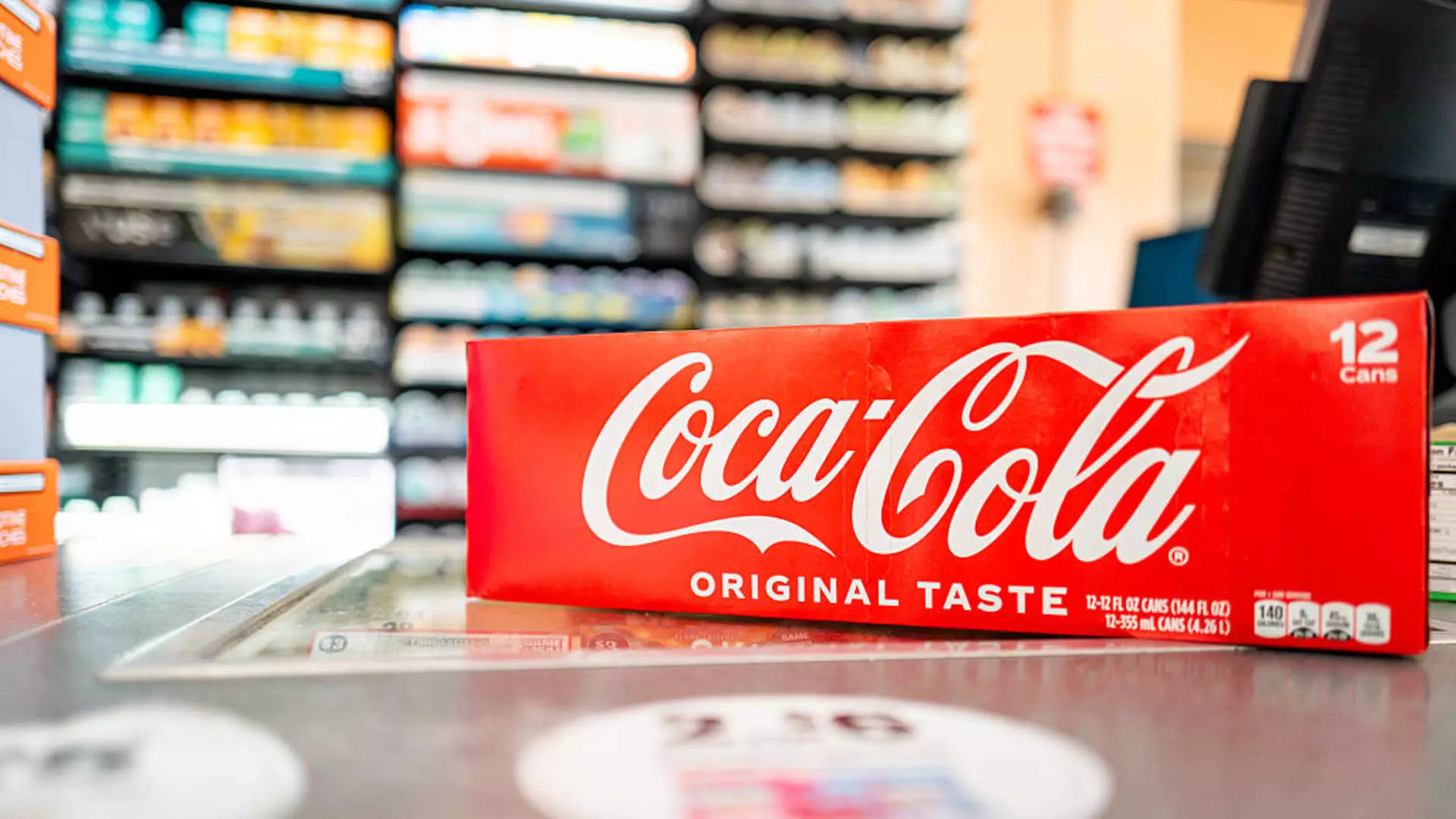In its latest earnings report, Coca-Cola has once again demonstrated the complex tug-of-war between corporate resilience and economic fragility. While the company’s numbers beat analyst expectations on paper—reporting increased revenue and net income—the underlying signals reveal a fragile consumer landscape marked by declining volumes and geopolitical uncertainties. This discrepancy underscores a stark reality: that even amidst growth, the fundamental health of demand and consumer confidence remains deeply unstable. It’s a paradox that exposes the vulnerabilities hidden beneath seemingly optimistic financial reports, reflecting a world where economic resilience is increasingly precarious.
Despite beating quarterly expectations, Coca-Cola’s shares barely moved in premarket trading, falling less than 1%. This tepid market response indicates growing skepticism about the sustainability of such gains. Earnings per share rose to 87 cents—outperforming the expected 83 cents—and revenues hovered at $12.62 billion, slightly above the forecast. These figures, however, mask a disturbing trend: a 1% decline in global unit case volume, with most regions experiencing reduced demand. The only exception, the EMEA segment, reported growth—highlighting the uneven and unpredictable nature of global markets. Such divergence signals that even regional victories may be fleeting, as macroeconomic headwinds threaten to undo these gains.
The Illusion of Strength in a Shaky Consumer Environment
One of the more disconcerting elements of Coke’s latest report is the disparity between revenue growth and consumer demand. The company’s organic revenue—adjusted for acquisitions, divestitures, and currency shifts—increased by 5%, suggesting that pricing strategies and product mix adjustments are temporarily masking deeper demand issues. Yet, this growth in revenue does not translate into volume; in fact, volume across hydrogenated segments remains weak. The decline in sparkling soft drinks, juice, dairy, and water categories paints a picture of a consumer increasingly hesitant or constrained by economic pressures.
Coca-Cola’s CEO, James Quincey, attributes some of the volume declines to broader economic uncertainty and geopolitical tensions that erode consumer confidence. But what’s especially telling is the company’s cautious optimism about recent improvements in particular regions like Europe and the U.S., where planned strategies are purportedly bearing fruit. Still, these gains are fragile. The fact that demand in North America—traditionally a robust market—slipped 1% suggests that even core markets are vulnerable. Consumers are tightening their belts, especially among lower-income groups targeted with affordability measures, illustrating the widening gap between corporate marketing efforts and declining consumer purchasing power.
A particularly revealing subplot involves the social media-driven controversy about Coke’s alleged reporting of undocumented workers. Though Coke denied the accusations, the damage to its reputation and subsequent sales dips underscore how social and political tensions are compounding economic struggles. Such external pressures threaten to undermine consumer trust and demand further, especially as misinformation fuels polarization.
The Illusive Promise of Innovation and Future Projections
Looking ahead, Coca-Cola’s strategic response emphasizes innovation—like introducing a cane sugar version of its flagship cola in the U.S.—as a potential catalyst for growth. Yet, these initiatives appear to be Band-Aids rather than cures for the underlying demand sickness. The company’s forecast of only a 3% growth in comparable earnings per share for the full year further underscores the limited optimism. Meanwhile, the reiteration of a 5-6% organic revenue increase target for 2025 seems more like a plea for patience than an endorsement of sustained strength.
The muted investment response—shares barely dipping—serves as a reflection of investor skepticism. Are these numbers truly reflective of ongoing business health? Or are they merely a veneer concealing an increasingly volatile landscape? With declining volumes in key markets and flat results in crucial segments like water and tea, Coca-Cola’s recent performance demonstrates that the apparent resilience of its financials is more a matter of strategic pricing and cost controls than genuine demand growth.
Ultimately, Coca-Cola’s earnings reveal a broader truth about the modern consumer economy: that superficial growth metrics and strategic adjustments are no longer enough to mask a fundamental decline in demand. As economic tensions continue to simmer and social discord influences buying behaviors, even corporations with global reach face critical risks. The true test for Coca-Cola—and similar multinational giants—is whether they can adapt to a world where consumer confidence is waning, or whether their current strategies are doomed to falter in the face of an uncertain future.

